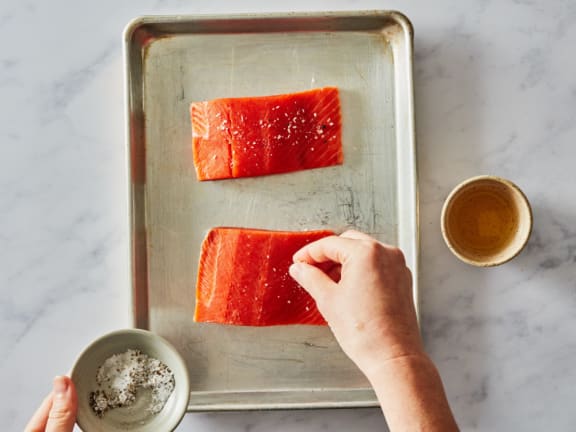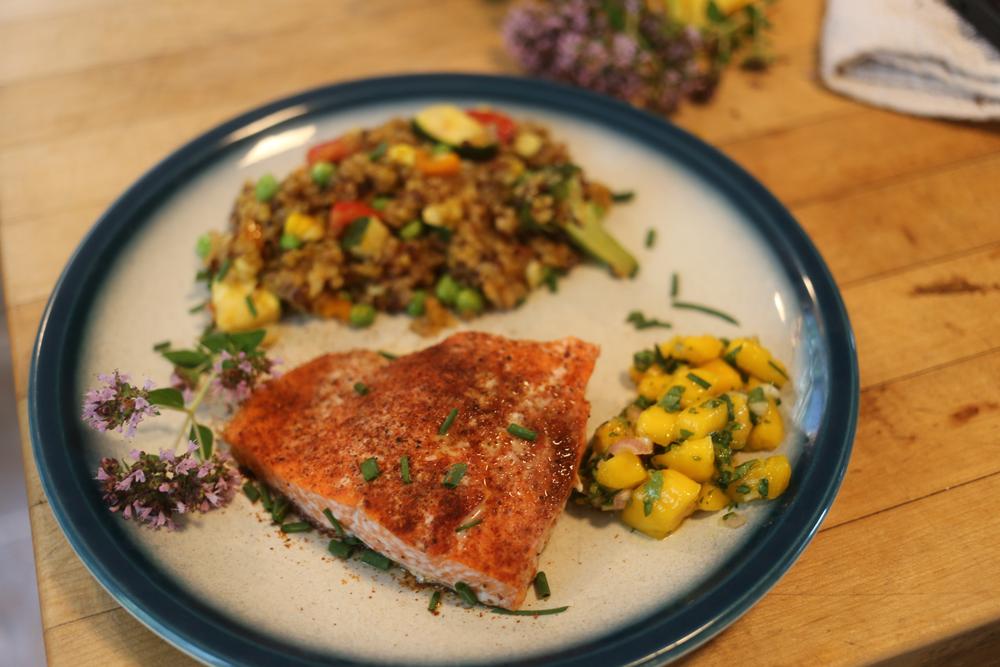There are key differences between Atlantic salmon vs sockeye salmon that give each species its unique nutritional profile, flavor, and appearance. These qualities are a direct result of how and where each spends its life, reflecting the complexity of nature and the limitations of human intervention through finfish aquaculture.
Wild sockeye salmon develop their robust qualities in a vast marine ecosystem, swimming thousands of miles over a lifetime in an epic hunt for food. This is in stark contrast to farm-raised Atlantic salmon, who are typically confined to a net pen — often situated in polluted, coastal waters — where they’re fed engineered pellets that can never truly replace a wild diet.
Is sockeye salmon better than farmed Atlantic salmon?
Yes, when you compare the health impact and environmental effects of sockeye vs farmed Atlantic salmon. Sockeye salmon from Alaska is rich with nutrients from the wild and is more flavorful than farmed Atlantic salmon.
Farmed Atlantic salmon is fed dye to resemble wild salmon, but it’s much less flavorful. More importantly, farmed Atlantic salmon is contaminated with chemicals that can have a serious effect on your personal health. The practices espoused at a typical salmon farm also contaminate surrounding ecosystems and create competition for resources between farmed salmon and wild species.
What does sockeye salmon taste like?
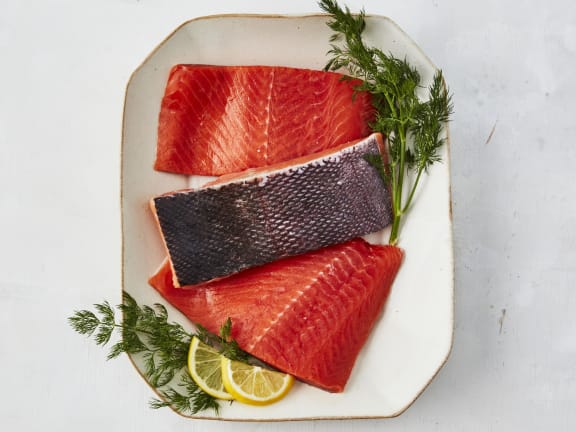
Between its texture and flavor, sockeye is one of the boldest species of wild salmon. If you’ve never tasted sockeye salmon before, the first bite of this species might be a pleasant surprise. Its robust flavor and texture are a reflection of its habitat and life cycle, giving you a true taste of nature.
Sockeye has a “salmon-forward” flavor that is bold enough to enjoy on its own or to be paired with intense flavor profiles. This species also has a meaty, dense quality as it is quite lean — but it’s a good source of omega-3 fatty acids.
What does Atlantic salmon taste like?
Farmed Atlantic salmon doesn’t pack the same punch as sockeye salmon. It is significantly less flavorful. Farmed Atlantic salmon is also much higher in fat.
The diet of farmed Atlantic salmon gives them an overabundance of omega-6 fatty acids. This is unnatural for the species, who become bloated and stressed. These characteristics result from their diet of pellets — typically engineered from soy and corn — which is deficient in the nutrients from the wild that give sockeye its rich qualities. These pellets are often supplemented with fish oils, but not nearly enough to match the fat ratios of a wild diet.
The fat profile of farmed Atlantic salmon can also be problematic for the humans who eat this fish on a regular basis. Diets with an excess of omega-6 fatty acids are associated with a higher risk of chronic illnesses. In contrast, diets that have higher ratios of omega-3 fatty acids (featuring foods like sockeye salmon) may lead to healthier outcomes.
How to Cook Sockeye Salmon
Regarding wild sockeye vs Atlantic salmon, wild-caught varieties generally take less time to cook because they’re leaner.
This is critical to note when cooking with salmon recipes that don’t specifically call for a wild species like sockeye. Most recipes treat farmed Atlantic salmon as the default choice, so cook times will correspond to farmed salmon. When cooking sockeye with these recipes, you should expect to reduce the total cooking time in order to avoid overcooking the fillet.
For recipes with cook times that are more accurate to wild sockeye salmon, explore some of Wild Alaskan Company’s favorite wild salmon recipes. Or, sharpen your wild salmon cooking skills with the help of step-by-step guides.
You may also find that you prefer lean, wild salmon cooked to a different doneness than farmed Atlantic salmon, so it’s worth looking over recommended internal cook temperatures for wild species.
Health Benefits of Sockeye vs. Atlantic Salmon

When it comes to wild Alaskan sockeye vs. Atlantic salmon, sockeye is healthier across several considerations.
Due to a diet rich in krill, plankton, and small fish, wild salmon are naturally a good source of omega-3 fatty acids that can help stave off oxidative stress and support heart health. This diet is the reason why salmon are pink or red, indicating the presence of an antioxidant called astaxanthin. When wild salmon have access to clean ecosystems like those in Alaska fisheries, they’re also low in contaminants, meaning they’re a healthy and safe source of protein that anyone can include in their diet on a regular basis.
Because farmed salmon don’t have access to a wild diet, they are often fed soy-and-corn-based feed that must be supplemented with omega-3s and synthetic antioxidants. Without this supplementation, farmed salmon would naturally be deficient in omega-3s and appear a shade of gray, rather than pink or red.
Notably, farmed atlantic salmon, as well as wild sockeye sourced from the Pacific Northwest, can contain elevated levels of PCBs, dioxins, and pesticides, which have been associated with adverse health effects in humans. Infants, children, and women of child-bearing age are especially advised to limit their consumption of seafood with elevated levels of these toxins in order to protect their health.
What is sockeye salmon?
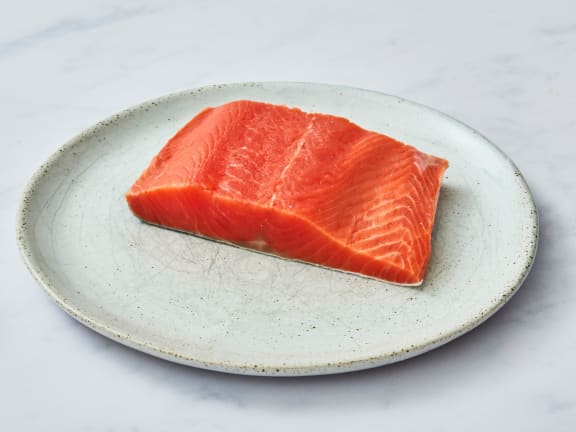
Sockeye salmon refers to a particular species of salmon, Oncorhynchus nerka, also commonly known as red salmon. It is a wild-caught species of Pacific salmon with habitats in and around Alaska, and as far south as the Pacific Northwest. Notably, Bristol Bay, located in Southwest Alaska, is home to the largest sockeye spawning ground in the world. Many know sockeye salmon as the crown jewel of the Alaskan fishing industry, because it’s the most economically important species of salmon in Alaska.
Sockeye salmon has been a critical source of food for communities on the Pacific coast for tens of thousands of years. Today, a majority of the sockeye that goes to market is from stocks in Alaska where fisheries are healthy and abundant. Populations in the Pacific Northwest are significantly smaller, due to habitat loss from hydroelectric dams and urban development, which poses a unique threat to the Native American tribes for whom salmon is both a cornerstone of their ancestral diet and culture.
What is Atlantic salmon?
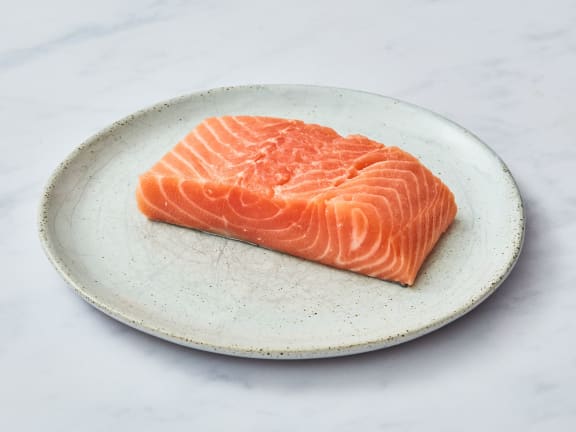
When you’re at the store, any fish that’s being marketed as Atlantic salmon is farmed Atlantic salmon. That’s because Atlantic salmon are an endangered species in the wild, with limited habitats in Maine as well as Canadian tributaries in the North Atlantic. Wild Atlantic salmon cannot be harvested by fishermen or sold in markets as scientists attempt to restore historical runs and rehabilitate wild Atlantic salmon populations.
Farmed Atlantic salmon are produced in aquaculture farms around the world, accounting for nearly 70 percent of the salmon market. While salmon aquaculture is a massive industry, it comes at the price of conservation issues that impact wild salmon populations and the fragile ecosystems that surround open-net salmon pens.
For example, the implosion of a net pen in Puget Sound in 2017 finally prompted the state government to ban Atlantic salmon farming in state-owned waters. Whether we’re considering Atlantic salmon vs Pacific salmon species, finfish farming in the open seas is so problematic that it’s also currently banned in Alaska, Oregon, and California.
In terms of taste and appearance, farmed Atlantic salmon have a less robust flavor profile than sockeye and are paler in color, owing to farmed salmon’s engineered diet. The feed is often made up of fish oil and other supplements like corn or soy. This diet lacks the krill and zooplankton that are part of salmon’s dietary needs, affecting both the color and nutritional profile of farmed Atlantic salmon.
Is Atlantic salmon dyed?
Farmed Atlantic salmon get their color from feed that is enhanced with dyes. These dyes are derived from a carotenoid called astaxanthin. Since farmed Atlantic salmon are primarily fed corn and soy, astaxanthin must be added to the feed to give the salmon a pink color. If farmed Atlantic salmon were not fed these dyes, they would be gray — which isn’t marketable to consumers, because we wouldn’t be able to recognize these fillets as salmon. When buying feed, farmers actually use a color wheel to determine what hue they want their salmon to be when they mature.
It’s important to note that astaxanthin is naturally found in shrimp and krill in the wild, and it is what gives wild sockeye their color, too. However, some salmon farms use synthetically derived astaxanthin to ensure that Atlantic salmon appears pink enough by the time they go to market.
Is sockeye salmon dyed?
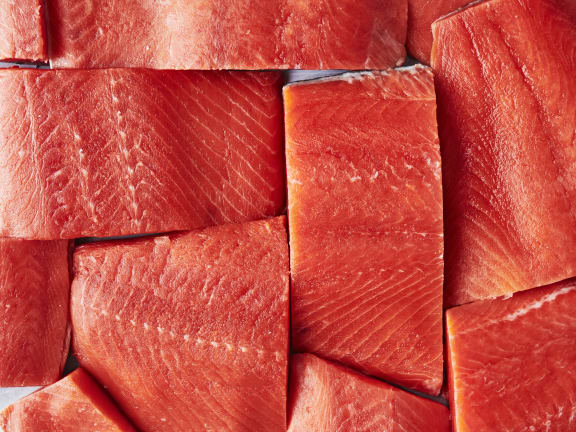
There’s no reason for wild-caught sockeye salmon to be dyed because they naturally develop the vibrant red hues that we associate with salmon.
Sockeye get this color from a carotenoid called astaxanthin, an antioxidant found in abundance in their wild diet of shrimp, krill, and zooplankton. Of all the wild Pacific species of salmon, sockeye salmon is the variety with the boldest color in their flesh, as their diet is primarily zooplankton. Other species of Pacific salmon consume less of these food and more small fish, so they are subtler shades of pink, orange, and red.
Environmental Impact of Atlantic Salmon vs. Sockeye Salmon
Atlantic salmon farms are not self-contained. Rather than taking pressure off wild salmon, they actually put stress on wild fish populations.
Conventional salmon farms introduce pollution, pathogens, and toxic waste into their surrounding environments. Regarding the chemicals used in pens to control disease outbreaks, those inputs leak out into the ocean and seriously impact fish and other species in surrounding areas. The use of antibiotics in these pens to fight off diseases has also created antibiotic-resistant diseases and parasites in the wild.
When the omega-3 supplementation used in salmon feed is derived from wild forage fish, this pits farmed Atlantic salmon against wild species in a competition for resources. In addition, the engineered feed for farmed salmon is made from corn and soy, which may be sourced from industrial farms that pollute and dilute vital resources for other ecosystems.
Sockeye salmon thrive in the wild and don’t need antibiotics or artificial feed to stay healthy. As a keystone species, they’re integral to the health of their ecosystems, playing a key part in an intricate food web designed by nature.
In terms of sustainability, when sockeye salmon are harvested from well-managed wild fisheries like those in Alaska, wild fish populations remain healthy and abundant from season to season, and help to protect critical marine habitats. Well-managed wild fisheries can even help overfished populations recover and sustain themselves in the future.
Where to Buy Wild Sockeye Salmon Online
Listed as a Bristol Bay-certified sockeye salmon supplier, Wild Alaskan Company is a trusted source for wild-caught salmon, offering fillets of wild sockeye and coho salmon that are flash-frozen shortly after harvest, processed while frozen, and shipped frozen to your doorstep. Choose your salmon subscription box today to get high-quality, sustainably-caught seafood.
Consider sharing the gift of wild salmon to friends and family. Sending the gift of Alaskan seafood to your loved ones is a thoughtful way to show you care.

